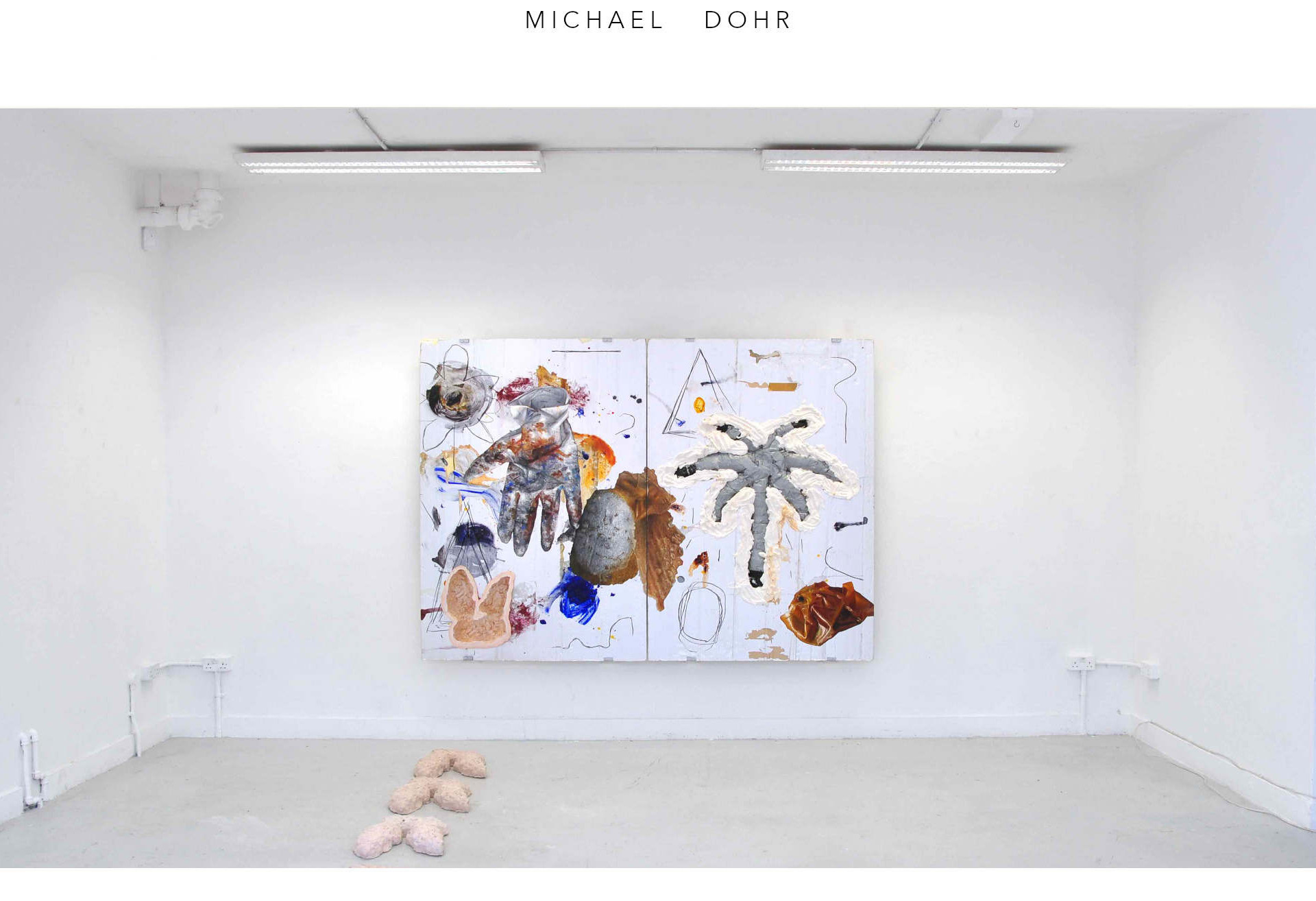In his work Michael Dohr explores the intersection of physical matter and coded systems, investigating the ways in which material reality is shaped, translated and undermined by digital structures. In an attempt to combine a material driven approach with something less tangible like symbols and codes, the artist is trying to illustrate the relationship between the physical world of things and something that can exist without a body.
Dohr often uses construction materials such as plaster, expanding foam or silicone as reference materials for his paintings and drawings but also looks at body tissues, plants or geological structures. During the working process these references merge into something that lies between the body, the synthetic and the landscape suggesting a process of transformation and change rather than a static system.
Negative space plays an essential role in the work, acting as both a remnant of lost matter and an active force. The sculptures extend this idea through the use of empty silicone molds—artificial impressions of bodies and shapes that no longer exist. These vacant forms serve as echoes of something once tangible.
In a process of imitating and simplifying natural structures, patterns or creatures and transferring them into a language of symbols and codes Dohr creates speculative worlds caught between a material-based past and a digital future. His work has been included in the London Grads Now. 21 show at Saatchi Gallery (UK), Late at Tate at Tate Britain online and Postcards from London at Villa Arson (FR). He was awarded the Frank Bowling Scholarship in 2020.
